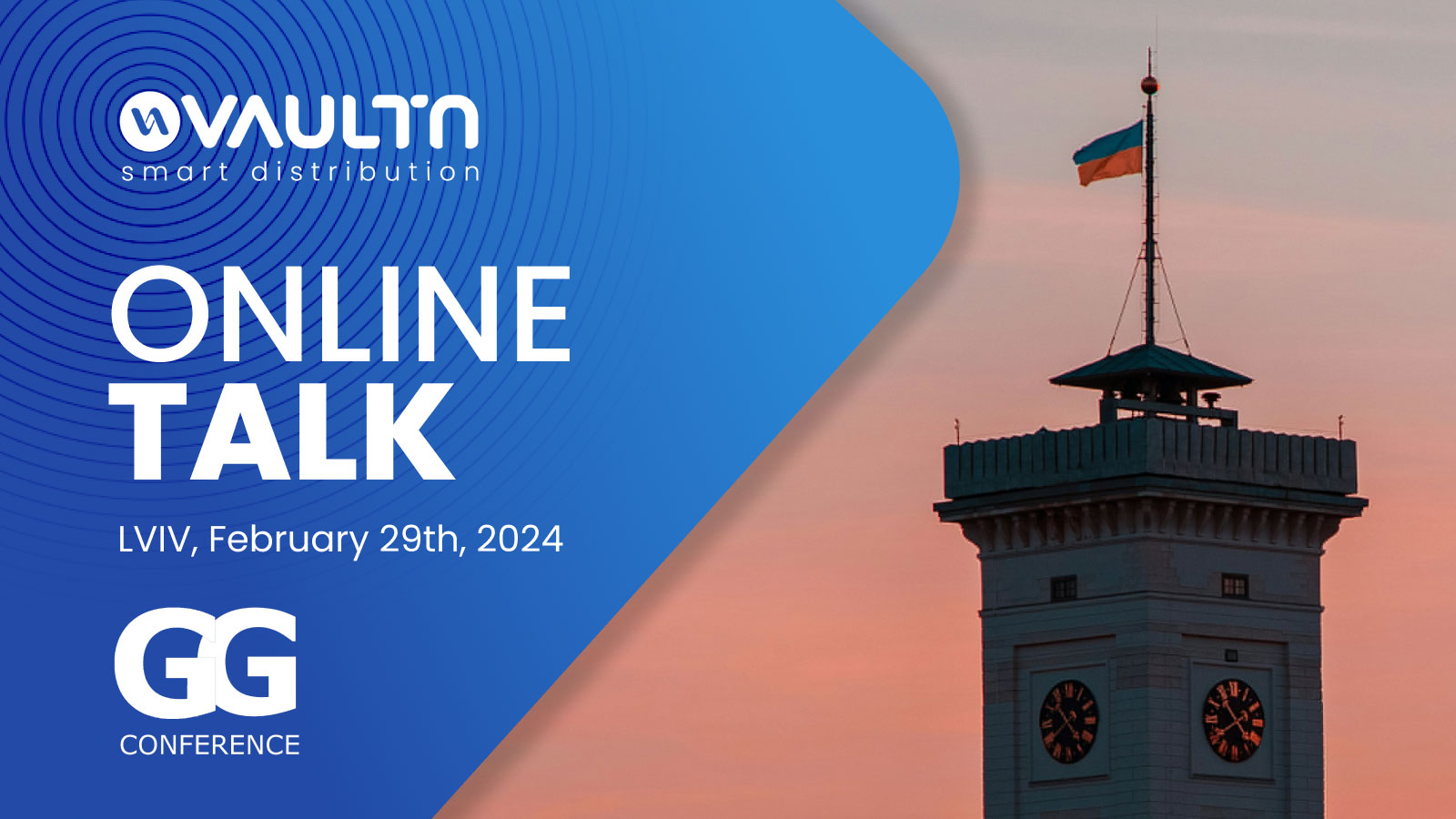In 2009, researchers at the University of Dublin began to study the ramifications of an all-digital supply chain. They described how a digital product could be characterised as a movement of value instead of a traditional product. They saw how, at the time, those products would be shared and distributed via “electronic means both within and outside organisations,” you know, sharing a long list of product keys on Excel Spreadsheets or PDFs. However, in the future, they foresaw a time when:
Network technologies have the potential to transform the supply chains of many industries because of the abolition of the trade-off between richness and reach of information, which means that everybody can communicate with everybody at almost zero cost, without constraints on the richness of information.
(Colm et al., 2009, pg. 9)
And now, more than ten years later, we’re…we’re um…still sending Excel spreadsheets.
What happened? More than a decade since we first observed the need to build new institutions for distributing digital products, how digital goods have seemingly unlimited potential to deliver value securely and instantaneously, and nothing has changed. Worse yet, those same researchers recognised how inefficient traditional supply chains were for digital products, observing how many organisations still used approaches “born out of [physical] supply chains, legacy infrastructure, and a competitive landscape designed to deal with physical product manufacture.” (Colm et al., 2009, pg. 9)
My name is Emrah Kara, and this is the need I recognized in the video game, consumer software, and a myriad of other digital content industries was left unfulfilled and why I founded VaultN. Together, we’re looking to revolutionize digital product distribution, relying on the latest technology to create supply chain management software that would allow developers, publishers and retailers to track and manage their products instantly in real-time, completely securely. No more sharing Excel spreadsheets with hundreds of thousands of dollars worth of product keys. No more cyberattacks waiting to compromise your organization in an instant, and no more wondering where your products are until they’re claimed.
Digital v. Physical Distribution
I recognized how the games industry had a problem with digital distribution, like most industries, the gaming industry started using the same physical supply chains everyone did. And back when they sold CDs, cartridges, or floppy discs, that was fine. Well, times have changed, and most people expect a purely digital experience. You click “buy”, and it’s yours. However, it’s not so simple for the people behind the scenes working every day to make that happen. Whether you’re Microsoft developing, publishing and selling your own products, or a tiny one-man indie developer, somewhere, at some point, you’re passing off a long list of product keys to someone through an email that represents more money than most people will see in a few years. That’s why there’s such a large grey market for buying and selling games, not to mention all the cyber-attacks.
Most people in the industry today still think of selling software the same way they sold physical products fifty years ago, to put it bluntly. What I still see when I look around is how people need a system that could track and trace digital products, and I knew I could make the supply chain management software that could make that happen, and if I did make it happen, it would be huge! In one motion, we could solve a big problem the games industry has been facing for years and give more control back to publishers and developers, particularly small developers. I started VaultN with the vision of an auto-leger that reports exactly what happens when it happens, a leger that would be impossible to cheat. Users could know where their product is, who owns it, and its status with a button press.
Making Digital Distribution Actually Digital
I know it may sound too good to be true, all the best things are, but once you see how it would work you’ll see just how big a difference this VaultN’s services could make. Well, it would all start with onboarding different parties: developers to publishers, publishers to retailers, retailers to consumers, and everything in between. Right now, onboarding is tricky. If you want to work with someone, you need to form connections, both personal and digital. On the tech side, particularly, everyone uses different systems and software, and it’s a real struggle to get them to sing to each other.
What I’m imagining is an alternate network to facilitate these connections. VaultN would kind of be like a social media platform. Instead of going through a long, painful process every time you want to work with a new publisher or retailer, you reroute your supply chain through VaultN once, and you’re instantly connected to everyone already using our platform. We’d make exchanging products with a new partner or client as simple as sending a friend request (almost).
It’s not just about connecting you to external entities either; one of the biggest benefits I see VaultN bringing would be making your product reconciliation far, far, far more accessible. Just think, you’re out there selling games, or software, or digital art, and you had a good quarter and sold more than two million this quarter. You have to track everything, too, different games, different currencies, different products. I know I probably sound like a broken record, but everyone still works like any other physical industry selling game discs; there was no existing system for sending digital products, so everyone is still using their existing physical supply chains as models. The result is creating a sales report based on your inventory of received sales. Your poor finance team has to sit down and compare two lists with long strings of names and long strings of numbers. It takes months!
Thing is, it’s digital. Let’s act like it. There’s no product to move and no reason to act like there is. It’d work just like your personal bank account. A transaction takes place, a record is made, and it can be searched, compiled, and summarised automatically.
Now, how do we do that? It’s simple, well maybe not that simple, but simple enough. These past few years, we saw further development of NFTs and blockchain tech, and these developments together make our vision for VaultN possible.
I bet a lot of older readers will remember how in WoW (World of Warcraft) there was and still is a market for buying and selling in-game items. The thing is the developers behind the game didn’t initially anticipate this and allowed it as a sort of grey market where people would buy and sell access to accounts that already had these items. Now with NFTs, we could take these kinds of transactions, both for the games themselves and in-game transactions and use the NFTs as a sort of digital signature to track and trace ownership. Then we can upload all these accounts and transactions unto the blockchain to render them virtually unhackable. No more grey markets where you throw your product codes into the wind and are left wondering what will happen, and no more sweating over losing all your stock because an excel sheet got misplaced somewhere. The second you need it, it’s all at your fingertips and one-hundred percent safe and secure.
The VaultN Dream
Now, I know you need more than a good idea, passion, and drive to make this kind of vision a reality. However, everyone on my team and VaultN and I have been hard at work not only making the tech and service the best we can make it but also building VaultN as a viable business too! We’ve already put together a great team based in Holland right now, though I swear this won’t be another tulip craze. We have a launch planned with over 500,00 transactions. So everything is operational, and now we’re focusing more on improving and optimising the UI (User-Interface). One thing I’ve learned in both my personal and professional experience is that it doesn’t matter how good your product or service is, no one will want to use it if it’s difficult to use, unintuitive, or ugly. Everything is so exciting right now as we’re looking at a tentative launch Q3, maybe sometime in September.
We’re not the only ones looking forward to launching VaultN. We’ve already lined up more than 300,000 already, and we’re continually drawing the interest of some of the biggest, most influential investors out there. You’d be surprised how many people can see the demand for the total next-level distribution of digital products. If it’s digital, we can distribute it swiftly, securely, and accurately; video games, in-game items, software, photos and images, receipts, legal documents, I could go on and on. If it’s digital, we can distribute it.
It’s a big market out there and I figured we’d have to focus our initial marketing if we wanted to come out the gate a success. It may be obvious, but I am slightly biased toward the gaming industry, and that’s where VaultN is initially concentrating initially. Right now, I see gaming as today’s gold rush. Everyone is going there. And just like the real gold rush, everyone sees an opportunity to make their fortune, grabs their shovel, and rushes off. Personally, I don’t want to rush ahead. I think VaultN is in a position to be on the sidelines selling the shovels to everyone else. Dropping the metaphor, if there are tons of people entering the gaming industry and we can provide them with the tools they need to focus on their games and not the logistics, we will make their success our success, and vice-versa. Most developers out there aren’t that big; indie developers don’t have a lot of excess cash lying around, and if we can solve their distribution problems, that’s that much more time and money they can invest in making something great!
Redefining the Digital Landscape
Can I guarantee VaultN will be a success? Of course not, but I’ve been working on different startups for decades, and I can see there is real untapped potential here! This is the time to do get our foot into the door of digital distribution before anyone else. There’s simply no better time. If someone out there can do it, why not me. Distributing digital products is such a vertical problem, you need to be fully immersed in it to imagine a solution. It’s not just about creating a new marketplace, but reimagining what a marketplace is. My people at VaultN are creating a new system, a system that works with teams. It takes a lot. We’re out here fighting people’s existing worldviews, being told ‘we can’t do things differently; this is how we have always done things.’ Their story changes once we show the platform off and give them a test drive behind the wheel. We’re making a service everyone needs, and the hard part is just convincing them they need it.
I see VaultN as having the potential to entirely revolutionize how we distribute digital products in the future. And with more and more of our consumption becoming digital, that’s a lot of potential. However, right now, I want to focus on what’s in front of me and make something that helps people with big dreams trying to create something new and beautiful, not talk themselves down because they don’t know the logistics of running a business. I know we’re unto something special. If we can make a system that can put everyone on the same level, imagine all the new games, products, and ideas that will explode outwards. Maybe I’m getting ahead of myself, but I do hope VaultN can make a difference for everyone, and in an increasingly digital world, it’s a problem that maybe shouldn’t take another ten years to figure out.
References
Ryan, C., Wagner, C., Sweeney, E., Esposito, E., Evangelista, P.: Digital supply chains: towards a framework for software distribution. Supply Management -Towards an Academic Discipline, Proceedings of the 18th International Purchasing and Supply Education and
Research Association (IPSERA) Conference, Oestrich-Winkel, Germany, April 2009.












